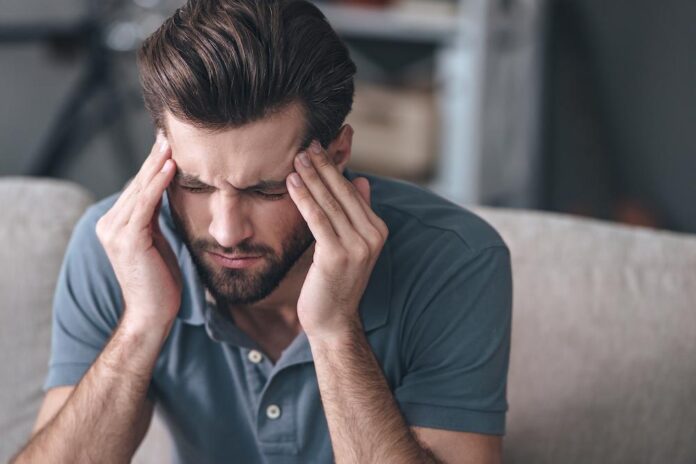Anxiety is a prevalent mental health issue that presents with a wide range of symptoms and indicators. For early intervention and successful treatment, it is essential to recognize these indications. We dig into the complex world of anxiety in this thorough investigation, outlining the various emotional and physical symptoms that people may encounter. We’ll also talk about how crucial it is to recognize these symptoms and how new therapies, like meditation, can be quite helpful in controlling anxiety.
Anxiety’s emotional symptoms include:
Excessive Worry of anxiety patients:
Uncontrollably worrying all the time is one of the main emotional signs of anxiety. People may find themselves obsessive with possible future developments, frequently conjuring up worst-case scenarios. This persistent worry can cause stress and make it difficult to go about everyday tasks.
Irritability of anxiety patients:
Anxiety may show itself as heightened irritability and a decreased ability to handle stress. Small annoyances that one might brush aside in everyday life can cause intense emotional reactions in those who are anxious. This increased irritability can harm relationships with others and have an adverse effect on general wellbeing.
restlessness of anxiety patients:
Anxiety frequently manifests emotionally as feelings of restlessness and an inability to unwind. People may feel uncomfortable all the time, which makes it difficult to focus or perform tasks that need prolonged focus. This restlessness adds to a constant sense of hypervigilance.
Feeling of Dread to anxiety patients:
An intense feeling of impending disaster or terror is frequently associated with anxiety. Even in the absence of obvious threats, people may have a sense of impending doom. This feeling of impending doom might add to an overall uneasy and uncomfortable mood.
Anxiety can have a substantial negative influence on cognitive function, which makes it harder to focus and concentrate. Racing thoughts and an obsession with concerns might make it difficult to focus or participate in activities that call for extended periods of concentration.
Anxiety’s physical symptoms include:
tightness in the Muscles of anxiety people:
One of the most common physical signs of chronic anxiety is tightness in the muscles. People may feel their muscles tense, especially in the shoulders, back, and neck. In addition to making you feel uncomfortable, this tense muscles can cause headaches and other health issues.
exhaustion:
Persistent sensations of exhaustion can result , which can be physically and mentally taxing. Anxious people may have trouble falling asleep because of their racing thoughts, but they may also not get enough restorative sleep, which makes them feel even more exhausted and lethargic.
Sleep disturbances:
Anxious people frequently experience disturbed sleep cycles. This may show up as a hard time falling asleep, frequent nighttime awakenings, or restless sleep. Sleep difficulties can worsen other symptoms of anxiety as well as add to weariness.
Gastrointestinal Distress:
Anxiety can directly affect the digestive tract, resulting in symptoms including nausea, cramping in the stomach, and irregularities in bowel movements. These gastrointestinal disorders are frequently the body’s physiologic reaction to stress.
raised Heart Rate:
Anxiety-induced activation of the body’s “fight or flight” response can lead to a raised heart rate. Increased anxiety is frequently accompanied by physical symptoms like palpitations, a speeding heartbeat, or a fluttering sensation in the chest.
The Significance of Identifying Symptoms of anxiety:
There are various reasons why it is critical to identify the symptoms and indicators of anxiety. First of all, early detection enables timely action, averting symptom exacerbation and possible long-term effects. Furthermore, by being aware of the various ways anxiety might present itself, medical personnel can better customize therapy regimens to meet the needs of each patient.
Recognizing anxiety symptoms also helps to lessen the stigma associated with mental health. A supportive atmosphere is created by having an honest conversation about the mental and physical symptoms of anxiety, which empowers people to ask for assistance without worrying about being judged. Destigmatizing anxiety makes the public more aware of mental health issues and fosters a more understanding, caring community.
Treatment Methods :
A comprehensive strategy that takes into account the condition’s psychological as well as physical components is necessary for the effective management of anxiety. Comprehensive anxiety management includes the use of pharmaceuticals, lifestyle changes, traditional psychotherapy methods, and cutting-edge therapies like meditation.
Cognitive-Behavioral Therapy (CBT) is a well-known, empirically supported treatment modality for anxiety disorders. This type of psychotherapy assists people in recognizing and changing unhelpful thought patterns and actions that fuel worry. Through the questioning of unhelpful beliefs and the development of constructive coping mechanisms, CBT equips people to effectively manage their symptoms.
Medication:
In order to reduce severe anxiety symptoms, pharmacological therapies are frequently used. To control neurotransmitter levels in the brain, doctors frequently prescribe serotonin-norepinephrine reuptake inhibitors (SNRIs) and selective serotonin reuptake inhibitors (SSRIs). Although benzodiazepines may be helpful in the short term, long-term use of them is usually discouraged due to the possibility of dependence.
Lifestyle Changes of anxiety people:
Leading a healthy lifestyle can make a big difference in how well anxiety is managed. In addition to supporting general wellbeing, regular exercise, enough sleep, and a balanced diet can help reduce the mental and physical symptoms of anxiety. Utilizing stress-reduction strategies and abstaining from stimulants like caffeine and nicotine improve treatment efficacy even more.
Interventions Based on anxiety Meditation:
In addition to traditional anxiety therapy methods, mindfulness meditation has shown great promise. By practicing mindfulness, people can learn to be more conscious of the here and now and examine their thoughts and feelings without passing judgment. By encouraging a sense of detachment from stressful thoughts, this exercise cultivates a more tranquil and balanced mental state.
The practice of mindfulness meditation involves encouraging people to focus their attention on the here and now. People learn to watch their thoughts without getting caught up in them by focusing on their breath, their body, or outside stimuli. By doing this, one can learn to become less attached to worrying ideas and to develop a more accepting and nonjudgmental outlook on life’s situations.
Guided Imagery and Visualization:
To induce a state of peace and relaxation, guided imagery entails conjuring up vivid mental images. In particular, visualization can be useful in lowering anticipatory and fostering a calming, upbeat mental state. People are assisted in building their mental haven, which serves as a haven in times of extreme worry.
Breathing Exercises to relief anxiety:
Autonomic nervous system regulation is aided by focused breathing exercises, which are an essential part of meditation practices. By triggering the body’s relaxation response, deep, diaphragmatic breathing balances the physiological arousal linked to worry. People can reclaim control over their breath and, in turn, their emotional state by learning rhythmic breathing patterns.
Integration of Meditation into Treatment regimens:
Due to its ability to improve general wellbeing, meditation is becoming more and more recognized as a component of anxiety treatment regimens. Meditation-based therapies foster a sense of empowerment and self-efficacy by providing people with useful tools to control their symptoms. A comprehensive strategy that tackles the psychological as well as the physical aspects of is made possible by the tailored integration of meditation.
conclusion
In summary, identifying the many indications and symptoms of is essential to successful intervention and treatment. For those who suffer from aniety, physical symptoms like tense muscles and disturbed sleep combine with emotional symptoms like excessive concern, impatience, and a sense of dread to produce a complicated tapestry of experiences. Early detection enables customized treatment regimens that include conventional therapy methods, drugs, lifestyle adjustments, and the growing importance of meditation.






